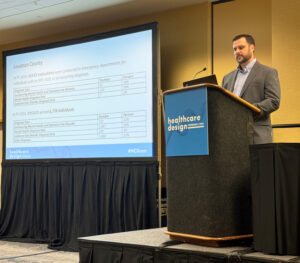 In the past year, 60 million people in the US experienced a mental illness. Typically, if an individual is having a behavioral health crisis they are taken to one of two places – the emergency room or jail. Crisis receiving and stabilization centers within our communities can help relieve the pressure cap on overcrowding within these institutions while delivering more targeted patient care by trained professionals.
In the past year, 60 million people in the US experienced a mental illness. Typically, if an individual is having a behavioral health crisis they are taken to one of two places – the emergency room or jail. Crisis receiving and stabilization centers within our communities can help relieve the pressure cap on overcrowding within these institutions while delivering more targeted patient care by trained professionals.
Firm Principal, Andrew Bowers, shined light on this issue along with teaming partners, Jamie Sellar, Chief Strategy Officer at RI International, and David Whale, Principal at Grimm + Parker to examine how owners, operators and designers can come together to find efficient solutions to allow more of these facilities to evolve into the landscape of community healthcare.
After examining both operational and functional challenges of behavioral health facilities, the team discussed how they right sized the program for the new Loudoun County, VA Crisis Receiving and Stabilization Center after meeting with project stakeholders. Increasing the overall footprint by 6,000 SF from the initial program and offering needed spaces such as a separate law enforcement entrance, storage areas, and an urgent care clinic, the program can now deliver support for both the 23-hour unit and the stabilization unit.
The team discussed the critical advantages of having the program provider involved from the outset of project design to help inform decisions around clinical flows, staffing models and safety. Providers can help navigate facilities licensing regulations, overcome design challenges, and address zoning issues.
One of the biggest concerns of any design team working within behavioral health facilities is patient and staff safety. The team discussed strategies for managing patient aggression, specifying safe and ligature resistant materials, and security considerations.
As the demand for behavioral health services continues to grow, the team helped illuminate the essential need for communities to invest in crisis receiving and stabilization centers to provide high-quality care and reduce the burden on existing healthcare infrastructure.

